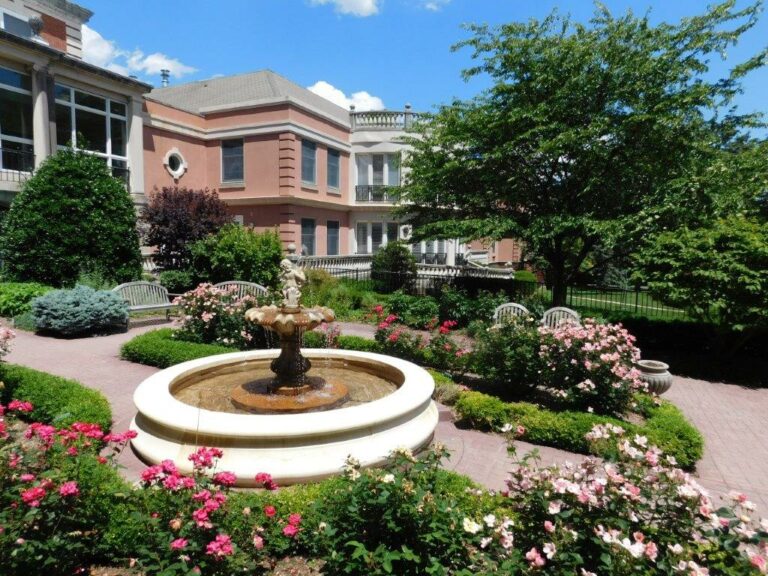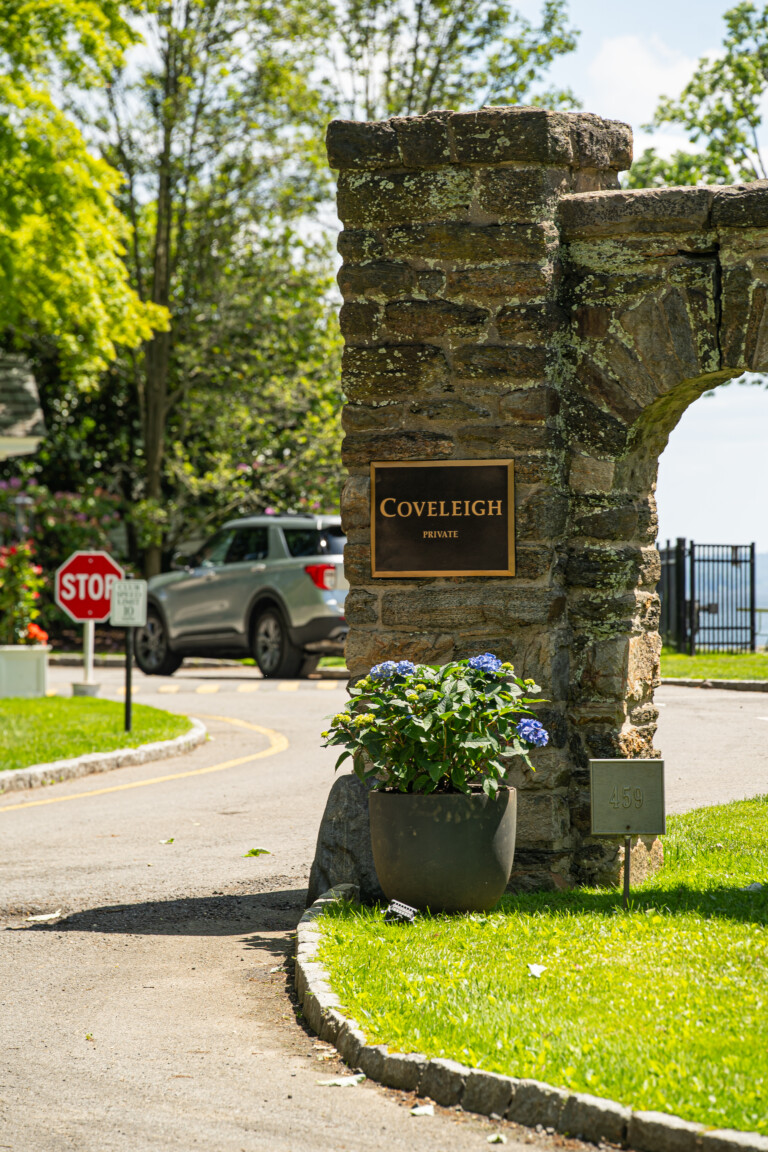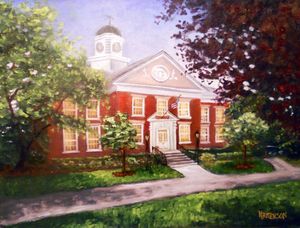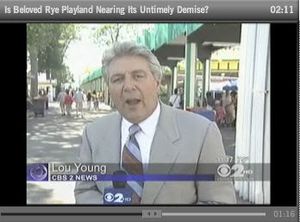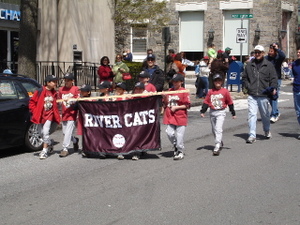Emerald Ash Borer Infestation @ Rye Recreation
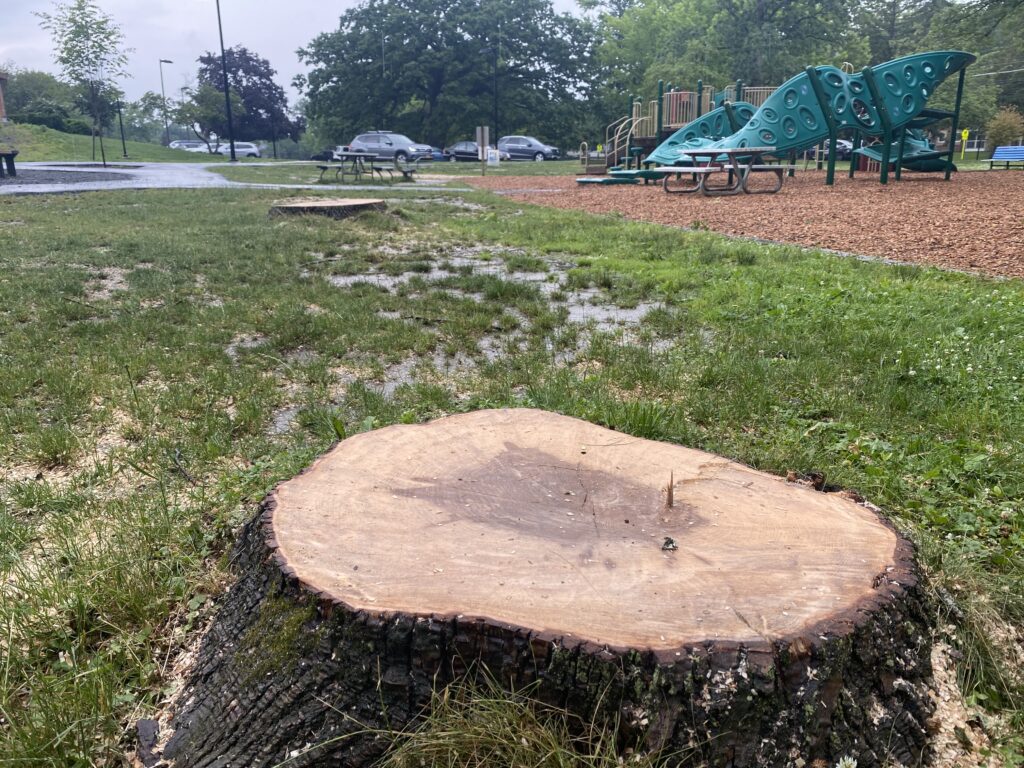
Eight large ash trees were removed from the Rye Recreation playground area by the Department of Public Works on Monday after the City discovered they were infested with the emerald ash borer (EAB) and could not be saved. The emerald ash borer is an invasive beetle from Asia that infests and kills North American ash species. It came into the United States first via Michigan in 2002 and is now present in 35 states. It is present in all but four counties in New York State.
“In the last several weeks we consulted with an arborist that examined the trees to determine whether there were treatments or other possible actions,” City Manager Greg Usry told MyRye.com. “We have not made any plans as of yet regarding replantings or landscaping, but that will come.”
Clear & Present Danger within Half a Mile
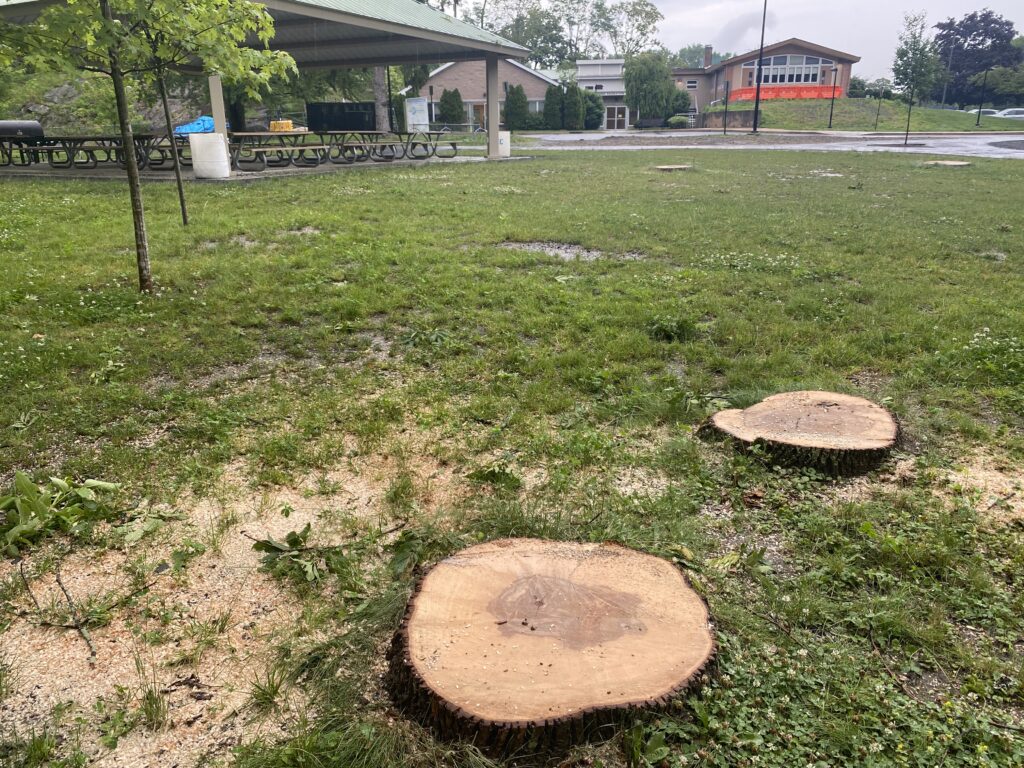
Residents nearby Rye Recreation should pay attention to the health of any ash trees on their property. “Adult emerald ash borers typically only fly less than half a mile from their emergent tree,” said Hillary Jufer, horticultural program manager Cornell Cooperative Extension of Westchester. “Within half a mile you are a potential source for it.”
If you have an ash tree on your property you truly care about and it means a lot to you, Jufer recommends calling an arborist certified by the International Society of Arboriculture. Many landscaping and tree companies are not properly trained, so exercise caution. Treatments are available, but you must catch the issue early. In Rye, the ISA lists Central Tree Service, Inc. and Gedney Tree Care as properly certified.
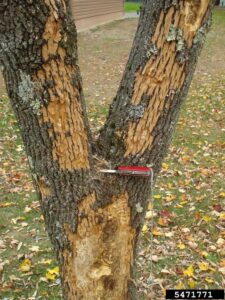
“You’ll know that if you have it on your ash tree,” said Jufer of the Cornell Extension. “The tree will start dying back and you’ll start to have progressively loose leaves. And then you’ll also see blonding – when woodpeckers and birds are trying to get at the larva that are inside the tree. You’ll see the bark of the tree, they are starting to take it off. It’s called blonding.”
As for a replacement plan for the eight ash trees lost at Rye Recreation, the City is weighing its options. “We have not made any plans as of yet regarding replantings or landscaping, but that will come,” said Usry. “We value the trees on City property and will continue to manage them, weighing the natural beauty, maintenance, utility and public safety aspects. We have planted a significant number of new trees on the Rec property over the last year, including numerous new trees within the new amphitheater.”
Resources for dealing with emerald ash borer (EAB):
New York Department of Environmental Conservation – EAB
New York Invasive Species Information Clearinghouse – EAB
Cornell Cooperative Extension of Westchester or phone 914-285-4620 (great free resource with experts you can speak with on the telephone)
International Society of Arboriculture – find a certified arborist

